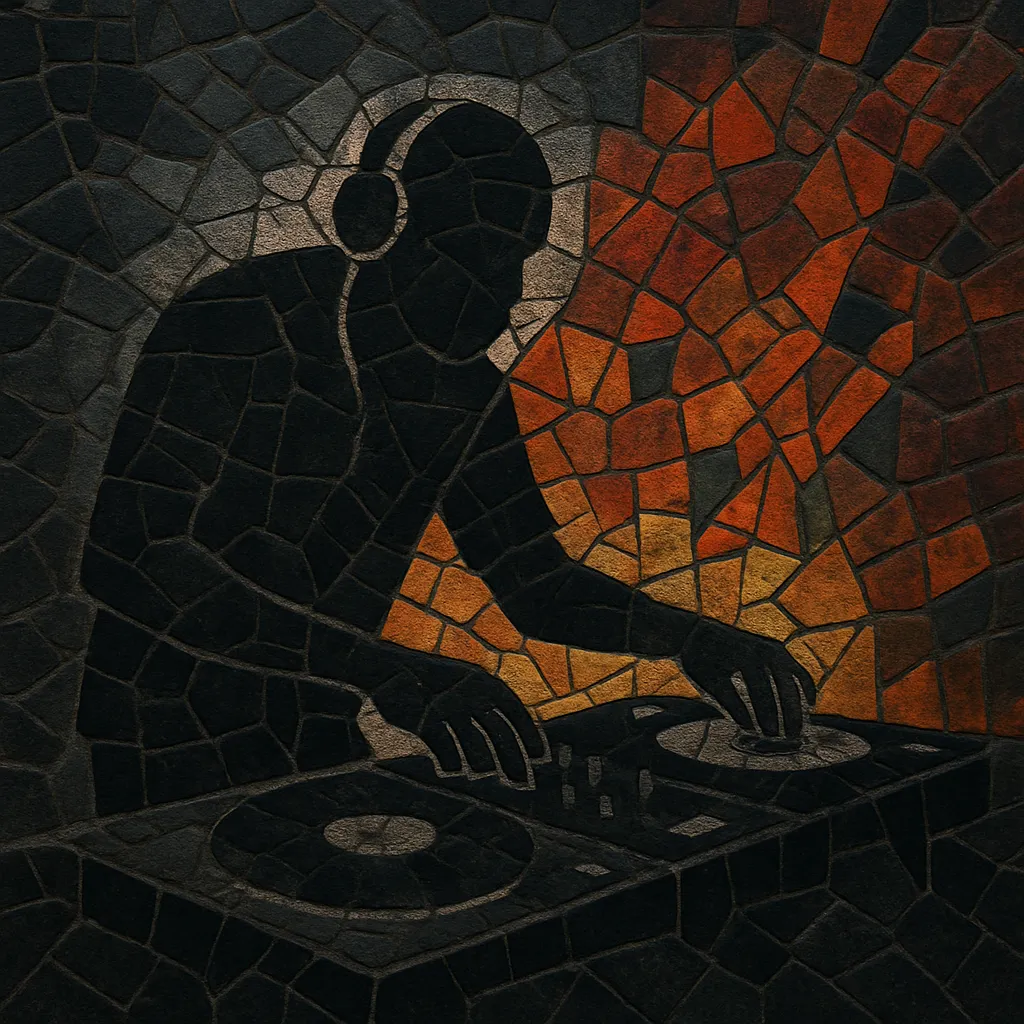Gqom is a minimalist, hard-edged club music from Durban, South Africa, built around pounding kicks, syncopated toms, and sparse, looped vocal chants. It favors tension and release over melodic development, using stark, percussive motifs and dramatic breakdowns to create a hypnotic, physically compelling groove.
Typically sitting around 120–130 BPM, gqom departs from straight four-on-the-floor house patterns, embracing broken-beat structures, off-grid fills, and sudden dropouts. The sound palette leans dark and industrial—heavy sub-bass, metallic hits, claps, whistles, crowd shouts, and found sounds—while harmony is minimal or absent, keeping the focus on rhythm and texture.
Gqom emerged in Durban townships in the early 2010s as young producers reimagined house and kwaito with a darker, more skeletal rhythmic emphasis. Working with cracked software, sample packs, and minimal gear, they favored raw drum programming over harmony, circulating tracks via data-sharing sites, Bluetooth, WhatsApp groups, and locally sold “taxi music” CDs.
Key hubs included neighborhoods like Umlazi and Clermont. The term “gqom” (linked to a Zulu onomatopoeia for a hit or thump) reflected the music’s concussive impact and street-born functionality for dance crews and parties.
Around 2015, international blogs, DJs, and labels began spotlighting the Durban sound. Compilations and imprints such as Gqom Oh! helped define and export the style, while pioneers like DJ Lag, Rudeboyz, Griffit Vigo, and Citizen Boy toured abroad. At home, acts like Distruction Boyz and Babes Wodumo took gqom to mainstream charts and national award stages, bringing the genre from township parties to national radio.
Gqom’s rhythmic grammar—broken kicks, tom-led syncopation, long tension ramps—fed into the broader global club ecosystem, inspiring percussive, drum-forward styles and shaping the sound of many deconstructed and “hard drum” producers. Within South Africa, it coexisted and cross-pollinated with other local scenes (including newer mainstream sounds), while remaining a distinct, performance-driven club form rooted in Durban’s dance culture.


